Application Series - XRD & XRF
An introduction into X-Ray Diffractometry
and X-Ray Fluorescence, how they are used, and how Applied Thermal Control's
recirculating chillers can be complementary to these processes.
How are XRD used?
X-ray Diffractometry is mainly used for
the identification of crystalline materials and can be essential in the
following industries:
- Geology
- Engineering
- Biology
- Material Sciences
- Environmental Sciences
- Battery Research
- Thin-film Coatings
- Electronics
- Pharmaceutical Industry
| 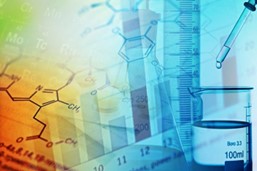 |
X-ray
diffractometers are often used in the pharmaceutical industry for the
classification a nd clear definition of the composition of materials. This
enables scientists and chemists to assess the parameters associated with the
crystal structures of pharmaceuticals. XRD allows scientists and chemists to
measure the actual percentage of substances in compound samples and is a key
method of analysis at all stages of drug development.
nd clear definition of the composition of materials. This
enables scientists and chemists to assess the parameters associated with the
crystal structures of pharmaceuticals. XRD allows scientists and chemists to
measure the actual percentage of substances in compound samples and is a key
method of analysis at all stages of drug development.
Forensic
scientists may use x-ray diffractometry to detect small amounts of substances
such as paint flakes, hair, glass fragments and stains, allowing for trace
analysis.
Within
the microelectronics industry, single crystal substrates such as silicone are
used to produce integrated circuits. For safety, among other reasons, it is
important to identify any defects within a crystal. X-ray diffractometers are
often used to do this.
XRD
is used in the glass production industry to identify tiny crystals that may
cause faults in the bulk glass manufacturing process. X-ray diffractometry is
also used to measure crystalline coatings used for texture. X-ray
diffractometry has helped to revolutionise the geological sciences through the
ability to not only identify minerals in rock or soil samples at rapid speeds,
but also determine the proportion of each material within the given sample.
How are XRF used?
X-ray Fluorescence can
detect and measure most elements within the periodic table, from uranium (the
heaviest element in the table), to lighter elements such as beryllium. This
makes it an analytical technique instrumental in teaching, research and quality
control in many industries including:
- Mining Industry
- Food & Drink Industry
- Continuous Process Industries
- Environmental Sciences
- Forensic Science
- Pharmaceutical Industry
- Medicine, including Herbal
- Recycling
|  |


In the oil and gas industry, XRD is often used for positive material identification (PMI) of piping material. This is critical where low accelerated corrosion or sulfidic corrosion are a concern.
In the automotive and aerospace industries, XRF allows for the inspection and quality control of metallic and coated parts.
X-ray fluorescence lends itself well to the sorting of metals, making it a good process for both the scrap and precious metal recycling industries. In the scrap metal industry, XRF allows materials to be sorted quickly and accurately, enhancing both efficiency and profitability. In the precious metal recycling industry, XRF allows metals to be grades, and prevents deleterious materials from entering the process.
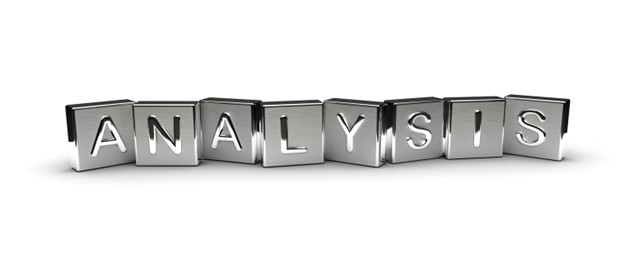
What is XRD?
XRD, or X-ray diffraction, is a non-destructive technique used to analyse the atomic or molecular structure of materials.
An X-ray Diffractometer consists of three elements, an x-ray cathode tube, a sample holder, and an x-ray detector. The cathode tube generates heat to the filament, producing electrons, which are directed toward a target by applying voltage. These electrons then bombard the target material, dislodging the inner shell electrons, producing x-rays. X-rays are directed onto the sample. The source and the x-ray detector in the instrument both rotate. When the geometric movement satisfies the conditions for Bragg’s Law for the sample being analysed, (the conditions at which diffraction occurs when x-rays and substance interact),constructive interference occurs, causing a peak in intensity. The detector processes and records the signal, which is then converted to a count rate for input into a computer.
These results are presented as peak positions and x-ray counts into a table. The Bragg equation calculates the d-spacing of each peak. Once all d-spacings have been discovered, it is possible to compare these to d-spacings of known materials for comparison and identification purposes.
What is XRF?
XRF, or X-ray Fluorescence, is a non-destructive technique used to analyse different elements within abroad range of materials including metals, plastics, and minerals.
During the interaction between x-rays and atoms, part of the x-ray is absorbed, causing fluorescence – the radiation that is produced by atoms. As everything is made of atoms, all materials should give off electromagnetic radiation. Therefore, XRF provides a means of analysing the material composition. Keep reading for a more detailed description of how below.
The x-ray beam affects the electrons surrounding an atom in the sample material, causing an unstable amount of high energy. Through the process of regaining stability, the atom displaces high energy electrons, which release energy as a result. This energy is emitted as fluorescence. This all happens within a fraction of a second. The measurement of energy displaced, and then replaced, is different depending upon the specific element. The emitted fluorescent x-rays are an identifying signature.
There are two types of XRF, EDXRF and WDXRF.
EDXRF, or Energy Dispersive X-ray Fluorescence, measures different x-ray energies emitted from a sample directly. An XRF spectrum is generated by counting and plotting the relative x-rays at each energy point. EDXRF is a rapid method, repeating the analysis at a high rate before sorting the results into different energy channels, and can detect most elements from the periodic table in just a few seconds.
WDXRF, or Wavelength Dispersive X-ray Fluorescence, is a detection system that sorts x-rays by directing x-rays to a crystal, which then sends the rays in different directions according to their wavelengths. A higher resolution is offered by WDXRF, which is sometimes needed to analyse more complex samples.
Features to Consider with XRD and XRF
Both XRD and XRF applications tend to be in equipment suites with limited space.
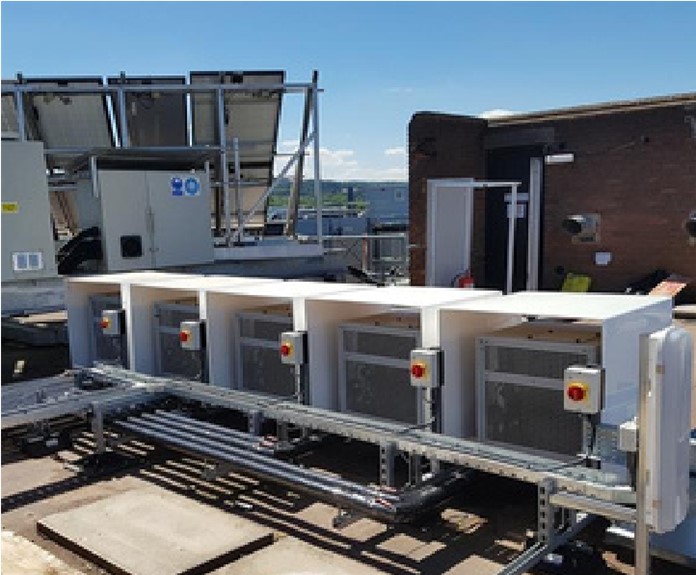
A chiller can be located on the roof of the building with the addition of a Qwikfoot kit, which allows the chiller to be mounted and listed off the ground.
With this kit consisting of rubber and felt heavy blocks, the weight of the chiller is spread over a greater surface area, providing an anchor with no need drill into the floor. A great example of the use of this kit with Applied Thermal Chillers can be seen at Loughborough University, where five k3 chillers have been mounted onto the roof above the XRD machines in the Chemistry Laboratory. More information on this can be found here.
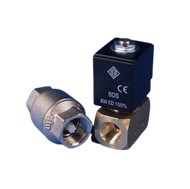
Applied Thermal Control recommend the addition of non-return solenoid valves in cases where the chiller and application are fitted at different levels, typically with a difference of more than 2 metres in height, or where pipe-runs are installed through ceiling ducts. Non-return solenoid valves allow fluids to travel in one direction only and have control units (electromagnetic solenoid switches) which, when electrically energised or de-energised, either close, or allow flow. This prevents any back siphoning of fluids when chillers are turned off for maintenance or filling.
Where chillers are located a distance from the application, Applied Thermal Control offer multiple options to allow for communication between apparatus, ranging from simple Volt-Free Connection sets to onboard RS485 protocols. These communication options allow for alerts to be sent in the event of high flow, levels, or temperatures.
It is also possible to fit a remote stop-start feature to allow a signal to be sent from the application, instructing to the chiller to turn off. Where chillers are in inaccessible locations, this can be invaluable in preserving machine health in the case that one of the above faults is indicated.
Where chillers are not located on the roof, and space is limited, it can be a concern that regulator valves and controls could accidentally be knocked when walking past, affecting pressure flow and performance. To eliminate this concern, ATC ensure that all controls are internal to the chiller, preventing accidental adjustment.
The X-ray sources on X-ray Diffractometers require high pressures.
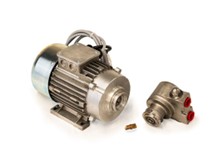 This can be challenging for some pumps to overcome, whilst still delivering the required flow rate. This situation can be exacerbated by complex pipe runs where the chiller cannot be located near to the diffractometer. Applied Thermal Control chillers typically use positive displacement pumps, which provide up to 10bar of pressure, but with an internal bypass controlled by a pressure relief valve. This allows you to achieve the required flow rate whilst protecting the application from high pressures. Setting the valve protects the application whilst allowing the pump to work as hard as is required to achieve the desired flow rate.
This can be challenging for some pumps to overcome, whilst still delivering the required flow rate. This situation can be exacerbated by complex pipe runs where the chiller cannot be located near to the diffractometer. Applied Thermal Control chillers typically use positive displacement pumps, which provide up to 10bar of pressure, but with an internal bypass controlled by a pressure relief valve. This allows you to achieve the required flow rate whilst protecting the application from high pressures. Setting the valve protects the application whilst allowing the pump to work as hard as is required to achieve the desired flow rate.
The XRF process tends to generate 3kW of heat.
 The K3 chiller is designed to provide 3kW of cooling on a single-phase machine, with a small footprint. Most machines offering more than 2.5kW of cooling will require a three-phase power supply, which can mean that electrical works may be required. Applied Thermal Control also offer multiple Standard Addition options to ensure the smooth running of machines in outdoor environments.
The K3 chiller is designed to provide 3kW of cooling on a single-phase machine, with a small footprint. Most machines offering more than 2.5kW of cooling will require a three-phase power supply, which can mean that electrical works may be required. Applied Thermal Control also offer multiple Standard Addition options to ensure the smooth running of machines in outdoor environments.
The addition of the outdoor use pack makes the chiller IP45 compliant, protecting from dust and water splashed from all directions (this includes all but driving rain). A frost protection pack may also be beneficial to prevent heat transfer fluids from freezing in cooler temperatures.
Coolants
There are two types of X-ray tube commonly used, monopole and bipolar, the utilisation of which can drive the choice of coolant used in the system. With bipolar tubes, the coolant may be in contact with components with a high electric potential. This can mean that a non-conductive coolant must be used. Monopole tubes are usually grounded via the anode side and so glycol and water can be used.
There are four main categories of coolant used with ATC chillers:
- Deionised Water
- Hexid
- Glycol
- Oils
|  |
Deionised Water
Deionised water is water with all, or most, of the ions removed. Mineral deposits and dissolved salts and minerals in regular water can cause fouling within the system and damages machine health. The high conductivity of untreated water can impair system performance. Deionised water has no charge. This lack of conductivity makes it suitable for cooling. ATC can supply conductivity sensors as an additional option if the conductivity of water is something that needs to be closely measured. This information can be communicated via RS485.
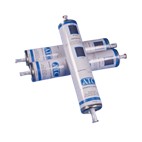
Deionised water is made by running source water through one or more separate electrically charged resins. There is an option available to install an in-line deionising cartridge with complimentary fittings to ensure that water used for cooling purposes is at the optimum quality.
Microbial contamination is a difficult problem to remedy once it enters a system as it causes growth, leading to internal fouling and blockages. Deionised water can be vulnerable to this form of contamination. To minimise this risk ATC can supply in-line UV decontamination pack, allowing any growth to be prevented by passing fluids through a steel tube containing a UV lamp. As water passes under the ultraviolet light, the genetic code of any microorganisms is attacked and the DNA/RNA rearranged, making it impossible for the microorganism reproduction or function.
Hexid
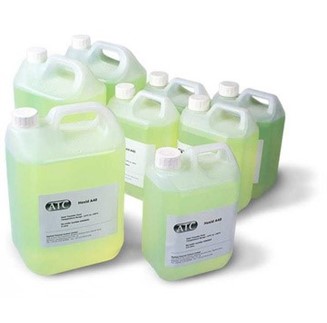
Hexid is a heat transfer fluid that is non-toxic, non-flammable, VOC free, ozone friendly and environmentally safe that is unique to Applied Thermal Control. It has been specially formulated to ensure that it is suitable for a wide operating range and use within closed loop systems. Hexid protects systems by safeguarding pumps, valves, and filters against corrosion, and is able to protect even aluminium and copper systems. It also protects against the growth of algae and other damaging bacteria. It is recommended that Hexid fluids are changed yearly to ensure that the system is running at its optimum, but with a low cost per bottle, Hexid is a cost-effective way to protect investment in applications. Due to its ability to perform at such a wide temperature range (-45°C - +90°C) Hexid is a beneficial heat transfer fluid for chillers situated out side or in non-heated rooms.
Glycol
Glycol is a less efficient heat transfer fluid than water, which has a better ability to retain and conduct heat from associated processes. However, glycol can continue to operate at low temperatures as it lowers the freezing point of the process fluid, ensuring that it continues to flow at operating temperature. It can also be a cost-effective option as it is relatively inexpensive and will need to be replaced every five years, less frequently than fluids such as Hexid.
Glycol is mixed with water. The location and application will determine the percentages of this mixture. Should glycol be required to perform under 4°C, the addition of a low temperature pack maybe beneficial. This addition will allow chillers to be controlled down to -15°C, however it may be necessary to use HexidA4, or similar, as a heat transfer fluid at these temperatures.
Use of glycol will help to prevent scaling and corrosion from forming and is able to protect metals such as copper, steel cast iron, aluminium, and brass. When glycol is used, algae and bacteria will not grow.
Oils
Oils, although not stocked by Applied Thermal Control, can be used as a heat transfer fluid. Oils are suitable for use with bipolar tubes, where the cooling fluid around the anode is in contact with electric potential, as oil does not conduct electricity. They have a higher boiling point than water so can be better suited to outdoor applications where ambient temperatures are too high for refrigerated cooling to be reliable.